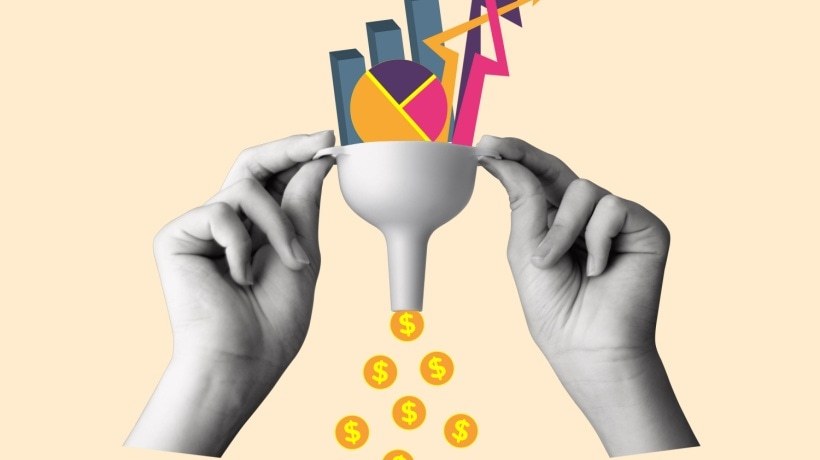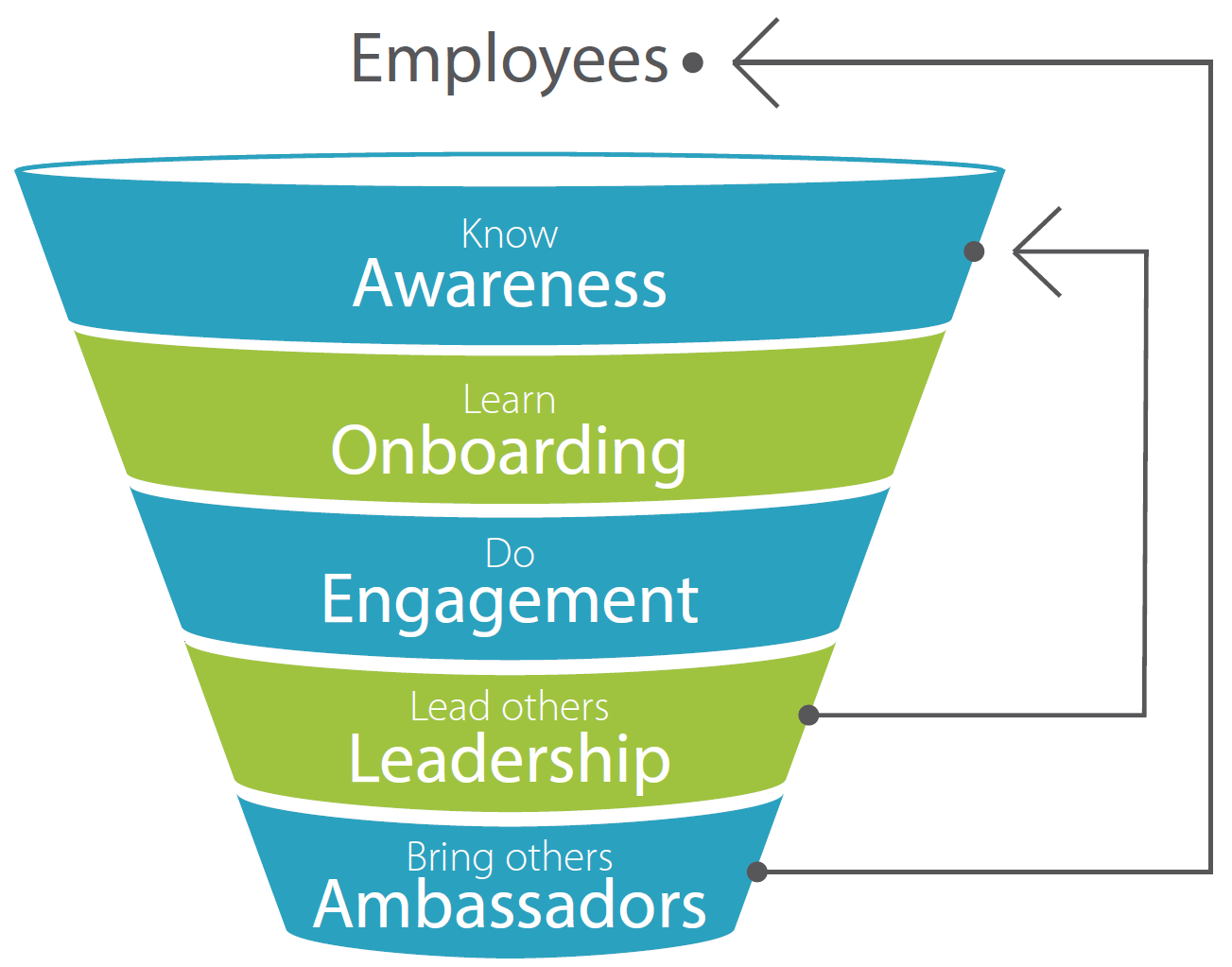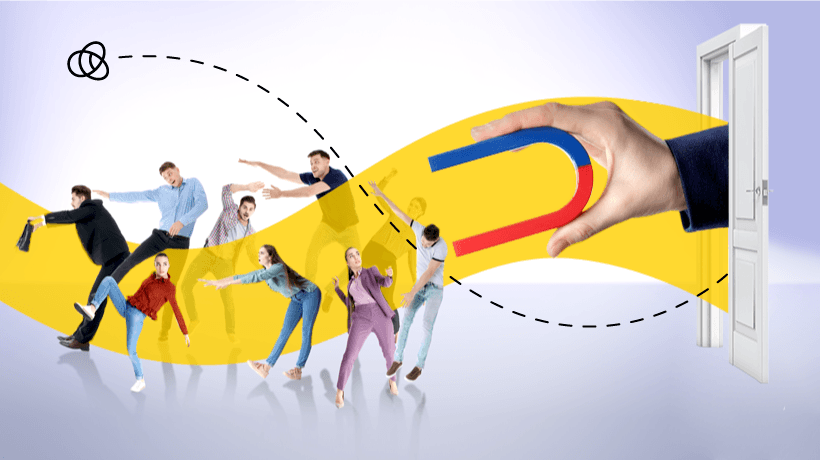Planning An Onboarding Funnel For The Best Experience
Imagine being introduced to an onboarding app, feeling excited, only to face a wall of confusion. There's no guidance, no clear next steps, just a blank screen. Most new hires or users may quietly abandon the process and never return, highlighting the importance of a well-structured onboarding funnel. An onboarding funnel is a step-by-step journey that introduces new hires or users to an organization, helps them achieve their first moment of value, and motivates them to stay engaged. While companies spend months refining their marketing funnels, the real growth engine often lies in how effectively they retain their talent or customers.
Over the past decade, both employee and customer expectations have increased significantly. People no longer tolerate awkward introductions or endless forms. They seek clarity, simplicity, and immediate small wins. Businesses that provide this positive experience significantly reduce churn, while those that neglect it risk losing new hires even before they start. This guide will explore the concept of an onboarding funnel in detail. You will learn why it matters, the stages that make it effective, and the steps needed to plan and build one that supports your organization's long-term growth.
In This Guide...
- What Is An Onboarding Funnel?
- Why Create A Funnel For Your Onboarding?
- How To Create An Onboarding Funnel
- Why Start The Process Of Optimizing Your Onboarding Funnel
- Funnel Examples/ Customer Onboarding Templates
- Wrapping Up
What Is An Onboarding Funnel?
At its core, an onboarding funnel is a structured path that transforms a curious newcomer into an engaged user. While a sales funnel focuses on attracting and converting customers, the onboarding funnel is about activating and retaining new talent. This is where first impressions are made and often where the future of the company and the new hire relationship is established.
The onboarding funnel begins right after a new hire joins. A potential employee may have clicked on a job ad, read positive reviews about the company, or received information from a recruiter. Regardless of how they arrive, the onboarding process determines whether their curiosity will turn into a commitment. The sequence may include a welcome message, a guided walkthrough, or a quick-start checklist. Each of these steps has one goal: to move the new hire closer to their first moment of discovering something new and interesting about the company.
Unlike a sales pitch, a user onboarding funnel focuses on experience rather than persuasion. The emphasis is on clarity, minimizing friction, and helping users quickly understand the value of being part of the organization. When done correctly, the funnel shortens the time it takes for new hires to realize the benefits of joining. However, when neglected, new employees may feel lost and may even leave the company.
For example, Slack doesn't just prompt users to create an account; it guides them in setting up a workspace, inviting colleagues, and sending their first message. Each of these carefully designed steps is intentional. Similarly, a new hire in eCommerce may receive a welcome discount email, suggestions for trending items, and prompts to add products to their cart. The objective is to build momentum and demonstrate value early on. In summary, the onboarding funnel is a crucial yet often overlooked bridge between recruitment and long-term engagement.
Why Create A Funnel For Your Onboarding?
Many businesses believe that once they hire a new talent, the most difficult part is behind them. However, the reality is that signing someone on is only the first small victory. The real challenge lies in transforming that curious newcomer into a committed employee, and this is where an effective onboarding process becomes essential. Let's explore why this matters.
Understanding User Behavior
Every step of an onboarding funnel reveals how people engage with your company. Do they skip the welcome tour? Do they abandon the account setup? Or do they quickly reach their first "aha" moment? Tracking these details is similar to observing customers in a store: you can see where they pause, lose interest, and make decisions. With this information, you can stop guessing and start learning directly from the actions of your candidates.
Identifying Areas That Require Improvement
No funnel is perfect on the first attempt, so mapping candidate journeys is crucial for identifying friction points that slow people down or cause them to drop out. For instance, if half of your sign-ups stop at the documentation stage, that indicates a problem worth addressing. Without a funnel, these blind spots can remain hidden. With a well-structured funnel, you can make targeted improvements that directly impact your outcomes.
Increasing Conversions
Conversions encompass more than just sales; in the context of onboarding, a conversion may refer to hiring a new recruit, introducing them to the organization, and ensuring their retention. The onboarding funnel gently guides newcomers through each stage, encouraging them to reach these important milestones. As a result, there is a greater likelihood that new hires will become engaged employees who remain with the company.
Streamlining Processes
An onboarding funnel helps you create a structured welcome experience for new hires, rather than leaving it scattered and disorganized. Instead of bombarding them with random pop-ups, emails, or tutorials, the funnel provides a clear, step-by-step onboarding process. This structured approach saves time for your team, minimizes confusion, and simplifies scaling as your organization grows.
Personalizing The Overall Experience
Not all new hires have the same needs. Some require additional support, while others prefer to learn independently. An onboarding funnel enables segmentation, creating a more personalized experience. For example, one group may receive detailed tutorials, while another can jump straight to advanced features. This flexibility helps individuals feel understood, which builds trust from the very beginning.
Measuring Long-Term Success
The true strength of an onboarding funnel extends beyond the first login or initial task; it provides insight into how newcomers behave weeks or even months after they are hired. For example, you might find that new employees complete the onboarding checklist but fail to explore advanced features afterward. This suggests that while the funnel may capture initial interest, it does not sustain long-term engagement. By tracking metrics such as daily active usage, feature adoption, and retention over periods of thirty, sixty, or ninety days, you can gain a clearer understanding of what leads to lasting success. This data allows you to refine the onboarding process and the overall employee experience. Rather than simply celebrating early accomplishments, you can create a funnel that ensures new hires continuously find value in their role.
Aligning Your Team
An onboarding funnel serves as a cohesive framework for various teams within a company. For product managers, it can help them pinpoint where newcomers face difficulties, while designers can work on enhancing those specific areas. Customer support can use it to develop resources that address common challenges, and marketing can align its campaigns with the same messages. This shared approach prevents departments from functioning in isolation. By collaborating towards a common goal, everyone contributes to helping newcomers succeed more quickly. The outcome is a smoother onboarding experience and enhanced teamwork across the organization.
How To Create An Onboarding Funnel
Designing an onboarding funnel requires a combination of strategy, creativity, and continuous testing. The goal is not to build it once and leave it as is, but to view it as an ongoing process that evolves with the needs of your new hires. Here are the key steps for creating an effective onboarding funnel.
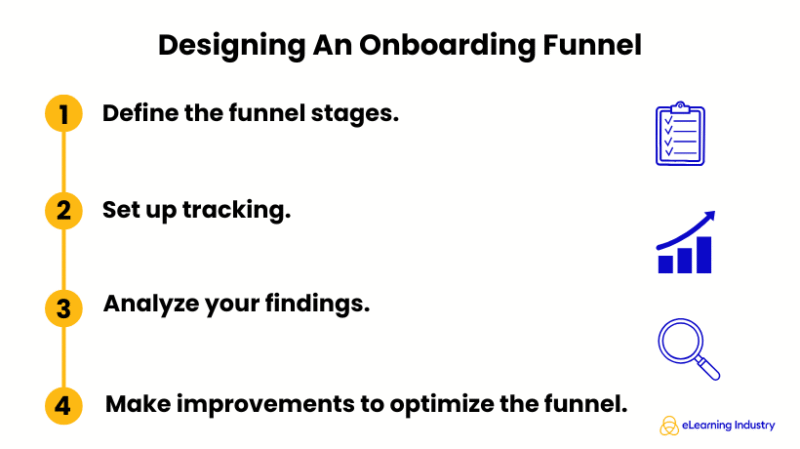
Define The Funnel Stages
Begin by deciding the checkpoints a user must pass through. For example, your funnel could include the following elements.
- Sign-up or account creation.
- First interaction with the company.
- Activation milestone (the moment they experience value).
- Retention stage (return visits or repeat actions).
Defining these stages gives structure. Think of it as plotting a map for the customer journey. Once you know the destination, you can guide users step by step, ensuring they don't get lost.
Set Up Tracking
Without data, funnels become guesswork. It's essential to use tracking tools to identify where users engage and where they drop off. Your options might include analytics platforms, event tracking, or even straightforward surveys. For instance, you could track how many users complete profile setup, how many watch a tutorial video, and how many perform the first key action. The goal is to turn each stage of the funnel into measurable data, allowing you to determine what is working and what isn't.
Analyze Your Findings
Once data starts flowing in, you'll start seeing patterns. For instance, many users open the app but do not complete the onboarding checklist. Similarly, new employees may engage with your welcome email but rarely click through to set up their accounts. These observations highlight specific points of friction in the user experience. When you analyze these findings, you can turn raw data into actionable insights.
Make Improvements To Optimize The Funnel
Data alone doesn't lead to results. After identifying where users drop off, the next step is to implement improvements. If users abandon the sign-up process, simplify the form. In case they overlook tutorial pop-ups, consider replacing them with interactive walkthroughs. If users fail to complete their account setup, think about offering a small incentive. It's important to target and test these improvements to determine if they effectively change user behavior.
Why Start The Process Of Optimizing Your Onboarding Funnel
Building an onboarding funnel is not a one-time project; it requires ongoing attention as your company and its employees continue to evolve. What works smoothly today may feel outdated or cumbersome a few months later. It's essential to treat your funnel as a living system that grows alongside your business.
User Expectations
The first reason for ongoing optimization is the changing expectations of users. People have become accustomed to the seamless experiences offered by leading apps and websites. If your funnel feels slower or less intuitive in comparison, newcomers will quickly notice. Regular reviews will help you determine whether your flow still feels modern and friction-free.
Adaptability
Secondly, optimization allows you to adapt to updates. When you introduce a new feature or redesign, your onboarding funnel must reflect those changes. If the funnel continues to guide newcomers to steps that no longer exist or fails to highlight new functions, the entire process can become confusing. Integrating updates into your product release cycle ensures users receive a clear and relevant introduction.
Growth Opportunities
Third, continuous testing uncovers hidden growth opportunities. Small experiments—such as changing the wording of a call-to-action, reordering steps in the welcome tour, or replacing a video tutorial with an interactive checklist—can lead to noticeable improvements. Think of it as fine-tuning rather than reinventing. Minor adjustments often result in significant gains in engagement and retention.
Paying Attention To Feedback
Finally, optimization is about listening. Pay attention to feedback shared through surveys, support tickets, or casual comments on social media. These insights can reveal pain points that analytics alone might miss. By responding quickly, you show newcomers that their experience matters, which helps build trust.
Optimizing your onboarding funnel follows a simple process: track user behavior, analyze patterns, test improvements, and repeat. Set aside time each month or quarter to review funnel performance, just as you would with marketing or sales metrics. Over time, this cycle keeps the onboarding journey fresh, relevant, and effective. A well-optimized funnel does more than reduce churn; it creates a smooth initial experience that encourages newcomers to stay, explore, and recommend your company to others. Consistent optimization is your best opportunity to turn first impressions into lasting relationships in a world where attention spans are shrinking.
Funnel Examples/ Customer Onboarding Templates
Understanding a concept is often easier when you see how others have successfully implemented it. This is true for creating a good user onboarding funnel as well. By examining real-world examples and templates, you can generate ideas for your own onboarding process. Below are some popular approaches that businesses across various industries commonly use.
1. SaaS Onboarding Funnel Example
For software companies, one of the main challenges is encouraging newcomers to sign up and ensuring they quickly recognize the value of the SaaS product. Slack serves as an excellent example. Instead of just stopping at account creation, Slack guides new users through three intentional steps:
- Creating a workspace.
- Inviting colleagues.
- Sending the first message.
Each of these steps brings the user closer to the "aha" moment, where they understand the tool's real purpose: facilitating team collaboration. The takeaway here is that your onboarding process should focus not only on sign-up but also on the actions that demonstrate the product's value.
Template For SaaS Onboarding
- Welcome email or in-app greeting.
- Guided walkthrough highlighting core features.
- Quick checklist with progress indicators.
- Encouragement to perform one key task (such as uploading a file or sending a message).
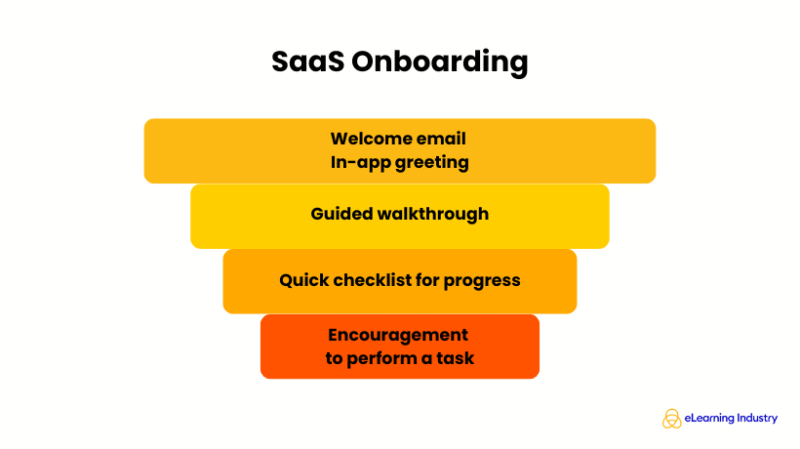
2. eCommerce Onboarding Funnel Example
In eCommerce, the objective is to guide customers from browsing to making a purchase and to encourage their return visits. Amazon often sends a welcome email to new users, which is followed by personalized product recommendations and a simplified checkout process. This approach aims to minimize friction while keeping customers engaged with products they are likely to be interested in.
eCommerce Onboarding Template
- Send a welcome email offering a discount or incentive to users upon sign-up.
- Include a product recommendation carousel based on their browsing history.
- Provide a streamlined checkout process that saves user details for convenience.
- Send a post-purchase thank-you email that includes tracking information.
- Follow up with suggestions for related items or upcoming discounts.
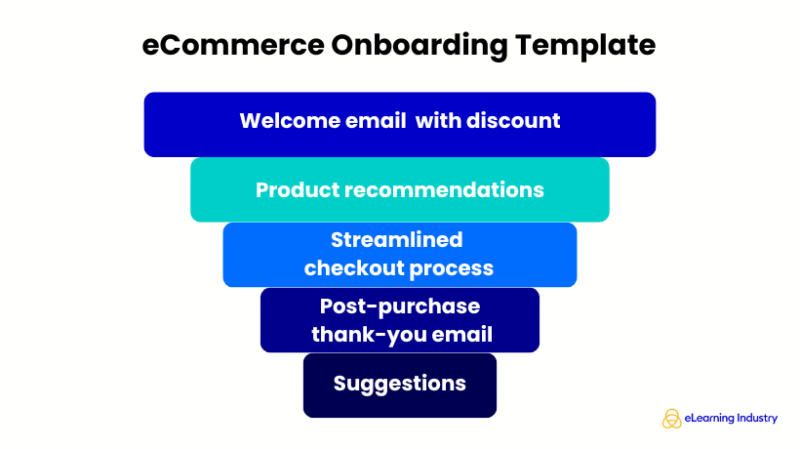
3. Mobile App Onboarding Funnel Example
Mobile apps often experience high abandonment rates, making it essential for onboarding to be quick and engaging. A prime example is Duolingo. Instead of lengthy tutorials, the app enables users to jump straight into their first language lesson and provides immediate feedback. Additionally, gamification features such as points, streaks, and progress bars help keep users motivated to return.
Template For Mobile App Onboarding
- Simple sign-up with options like Google or Apple ID.
- Immediate first action (starting a lesson, logging a habit, tracking steps).
- Progress bar to show completion percentage.
- Push notifications to encourage continued use.
- Rewards or milestones that celebrate small wins.
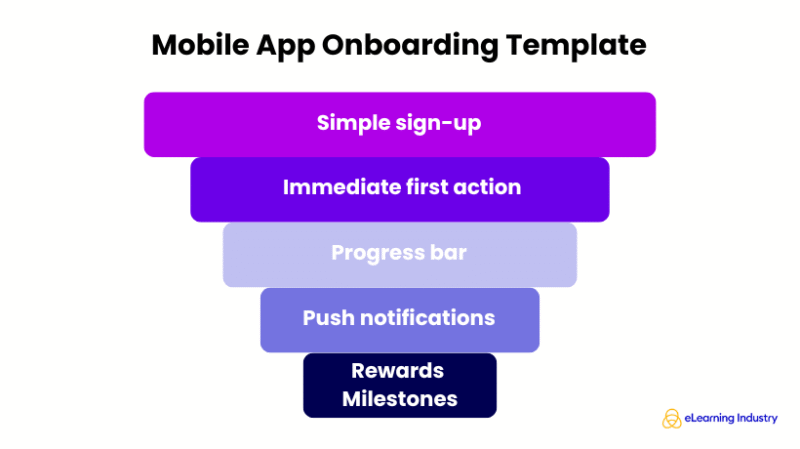
4. B2B Service Onboarding Funnel Example
When companies sell their products or services to other businesses, the user onboarding process often requires a more structured approach. For example, HubSpot utilizes a combination of automated and personalized elements to streamline this process. A new employee at a partner company might receive automated guides, video tutorials, and access to a dedicated success manager to help them achieve key milestones.
Template For B2B Service Onboarding
- Introductory email from a manager.
- Scheduled call or demo to walk through the features.
- Resource library with guides and FAQs.
- Regular check-ins during the first 30 to 60 days.
- Survey to measure satisfaction and identify areas for improvement.
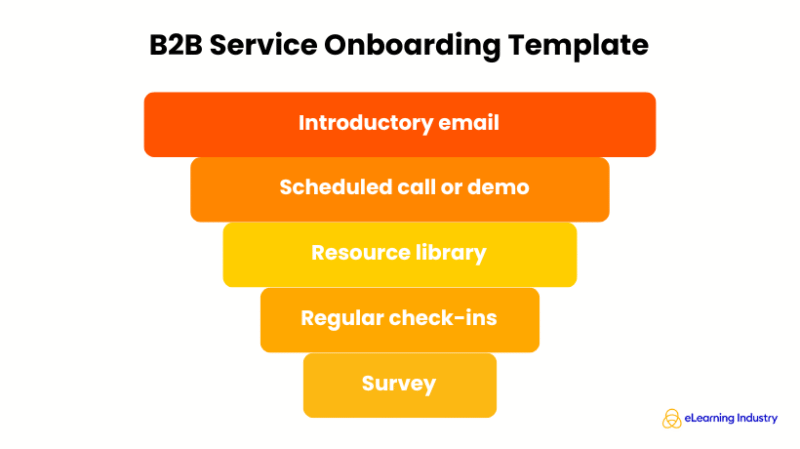
5. New Hire Onboarding Templates to Try
If you are developing your first onboarding process for new hires, here are some simple, plug-and-play templates to enhance retention.
Basic Email Funnel Template
- Welcome email with a warm greeting.
- Educational email with helpful tips.
- Value-focused email addressing a key pain point.
- Reminder email to prompt the user to complete a task.
- Feedback email to gather insights.
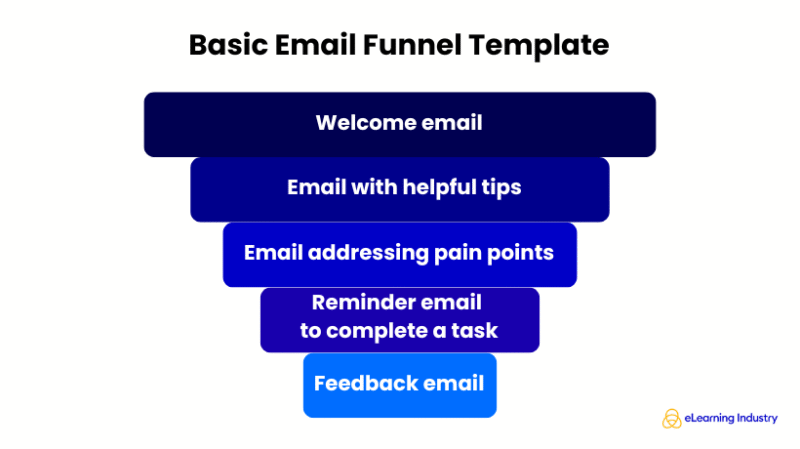
In-App Funnel Template
- Welcome screen explaining the value proposition.
- Interactive tour highlighting top features.
- Checklist with 2–3 simple tasks to get started.
- Pop-up prompts guide new hires if they experience difficulties.
- Celebration message when the new hire completes their first milestone.
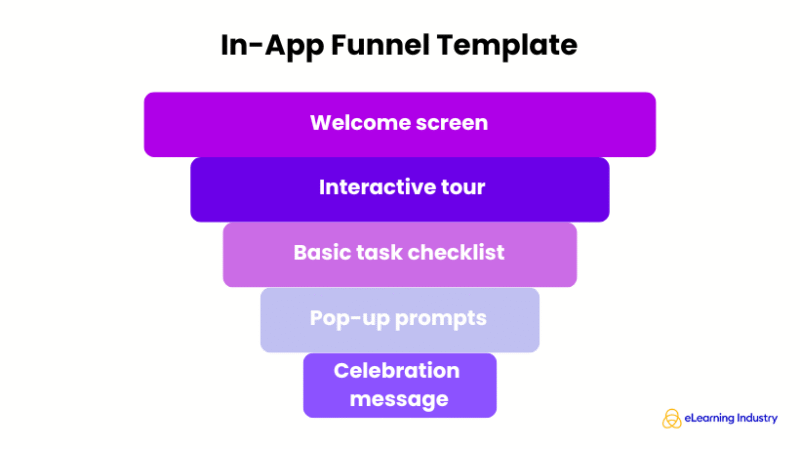
The best onboarding funnels do not simply copy others; they learn from them. Draw inspiration from successful strategies and adapt them to suit your users. Infuse your brand's personality, cater to your employees' needs, and ensure that every step answers the question, "Does this help the newcomer feel valued sooner?"
Wrapping Up
An onboarding funnel is more than just a welcome process; it serves as a bridge between curiosity and commitment. First impressions are crucial, as they influence whether a new hire decides to stay or leave. By planning carefully, tracking behavior, and making continuous improvements, you can create a structured pathway that helps new employees realize their value quickly and keeps them engaged.
The most successful onboarding funnels are dynamic, evolving alongside your company's growth and changing expectations. Every update, piece of feedback, and test contributes to refining the process. Over time, this cycle can transform onboarding from a basic introduction into a long-term growth engine.
If you are just beginning, start with a simple funnel that includes a few stages, then expand and optimize it as you learn. If you already have an onboarding process in place, examine it from a fresh perspective and ask yourself, "Does it still guide newcomers smoothly?" Remember, the ultimate goal is to retain new hires and build their trust and loyalty. A well-designed onboarding funnel achieves this by ensuring that every new employee feels supported from the very first step.
Frequently Asked Questions
Yes. While you can onboard users without a formal funnel, the results are often inconsistent and difficult to measure. A funnel provides structure to the onboarding process, ensuring that every user goes through the same key stages, from their first interaction to activation. Without a funnel, users may get lost due to confusion, missed steps, or a lack of direction. In summary, a user onboarding funnel not only makes the process smoother but also makes it repeatable and scalable.
The best way to begin is by outlining a simple user journey with a few key stages: sign-up, first task, and activation milestone. Once you have mapped this out, utilize basic tools such as email sequences or in-app guides to assist users at each stage of the process. For instance, you can send a welcome email, encourage the user to complete a small action in the app, and then celebrate that accomplishment with a message or a reward. From there, incorporate tracking to identify where users succeed or experience drop-off. Even a basic funnel can provide valuable insights and control over the user experience.
